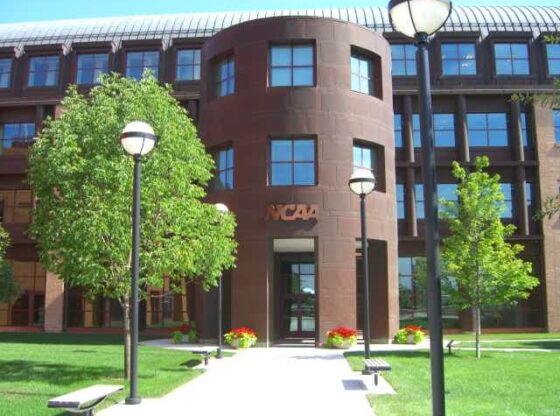I was 11 years old, a gymnast, training 20 hours a week, four hours a day following seven hours at school. Gymnastics had been my life since age two, and I adored it. But what started as a little fear turned into immense dread each and every day.
The time came to train our level-seven back handspring series on beam, something each gymnast needs to progress further in their career. Jumping backwards onto your hands on a four-inch-wide surface, four feet above the ground in a split second is not something many people ever have the chance to experience, so believe me when I say it’s scary.
I had gotten my back handspring the year before, had perfected it even, but for whatever unknown reason, I developed a mental block. It felt like a physical wall I was incapable of ever penetrating, as though I had lost the skill completely.
When dealing with something like this, you are meant to turn to your coaches for guidance. I hadn’t the slightest idea of how to get over this block, so I thought the way my coaches handled it was the only way.
Every day at practice, my coach would stand right below me while I prepared to perform the skill. That is when the dread and fear would ramp up and overtake me, suddenly freezing me to the beam.
It would start with them staring me down, then counting from three, over and over for minutes without pause, then progressing to yelling “GO. NOW. GO.” loud enough for the whole gym’s attention to be on me.
I started to tear up and never moved an inch, feet cemented to the beam. I thought something was wrong with me. Surely this was the way to handle getting a skill back, so why couldn’t I?
In the end, the only reason I got away was because my loose tooth had fallen out. I can still remember the sense of relief I felt, and I remember purposely taking much longer than I needed to go put my tooth away and use the bathroom.
Beam rotation was over by the time I got back. I quit a year later.
This experience is not an uncommon one, it turns out. Preadolescent and adolescent girls face this type of harmful coaching every day across the world. Prior to the Larry Nassar scandal around 2018, this authoritative coaching style was looked at as no different from being simply “strict.”
It was often praised, even, as the coach had a “handle” on their athletes and “cared” for their future in the sport. Gymnastics is a tough sport, and it is only getting more so as harder skills are consistently being performed for the first time.
Naturally, it requires a tough environment — the pressure from judges and the audience at competitions, the apparatuses themselves being potentially life-threatening and the mental resilience required to purposely put yourself into harm’s way. If you add in a tough coach who pushes you over the inevitable mental barriers, progress is sure to be made.
The mental and emotional cost of maintaining excellence in gymnastics has roots dating back to the 80s with the Karolyis, the coaches for the US national team, and their star gymnast, Mary Lou Retton. But the roots were hidden from view for decades. So, when did this issue find its way into the spotlight?
Much of USA Gymnastics (USAG), up until the Nassar conviction, was built upon assertive Russian leadership and influence through the Karolyis. Once claims were made about the environment — mental and physical abuse — all sorts of underlying issues were brought to the surface.
Gymnasts began speaking to their concerned parents about what it was like for them in their own gym, comparing it to what had been done at the National Team Camp.
I remember my sister and I sitting down with my mom to discuss what to do if we were ever put into such a situation. It seemed impossible to me at the time, a young and impressionable girl with unfaltering trust in her coaches. While nothing nearly as serious as the Nassar case ever occurred at our gym, the signs all pointed to existing abuse.
Daily gymnastics practice is the ideal situation for hurtful words to be brushed under the rug.
I was always torn between feeling dread and the excitement of being with your best friends, singing along to the music while you wait for your turn and cheering when a teammate succeeds. Ultimately, you are doing something you have always enjoyed doing.
The real issue is that these gymnasts are young. How is a 10 or 15-year-old supposed to know the difference between a coach who simply pushes you and one who hurts you in the end? And is that hurt, true hurt, or just a side effect of being pushed past your comfort zone in order to gain a new skill?
After a long practice, with bloody hands, sore muscles and an exhausted brain, one is not inclined to analyze your coach’s behavior, least of all bring it up to your mom who has had a long day driving back and forth from work, school and practice.
Today, as more and more studies come out about mental health and the things that cause its decline, there is more of a focus on sports psychology. In fact, an in-depth study exploring the impact of a coach’s emotional abuse was done to analyze the mental health of collegiate student athletes.
It was found that the majority of the side effects of abusive coaching show up later in life, especially when the abuse occurred in the athlete’s adolescent years. Things like anxiety, depression and obsessive-compulsive behaviors have been found in student athletes in correlation with the abusive coaching style itself.
While the increase in mental health awareness in athletes has indeed expanded and will no doubt naturally help resolve this issue over time, there is still action to be taken. We can hardly expect young gymnasts to immediately recognize the signs any better than before, but parents now have the resources to understand what may be occurring with their child.
No matter the amount of research, every situation differs and it can be hard to decipher between what behavior is harmful versus helpful. However, routine check-ins with athletes both at home and with professionals who specialize in sports psychology could help.
In turn, unable to count on coaches themselves to instantly alter their ways, increased oversight of local gyms by USAG could stop harmful coaching tendencies before they have a chance to cause real damage.
Whether or not you are involved in this world, continuing to spread awareness of mental health issues will have an impact in the long run. If you see signs of mental or emotional struggle in athletes of any sport, the best course of action is to reach out with a helping hand.
No harm comes from a little support, no matter the case. The more aware we are as a society, the better we can handle such situations in the future.










